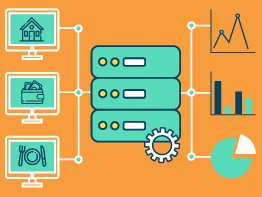
It’s common knowledge that clinical care plays a relatively small part in population health. Such factors as clean environment, stable housing, health literacy, reliable transportation, and access to nutritional foods have a far greater impact on the lifestyle and health outcomes of communities.
In recent sociological publications, these conditions acquired the collective label of social determinants of health (SDOH), sparking a debate about their application in healthcare.
How can providers promote health equity? How to achieve stakeholder buy-in and quantify ROI? Is it even worth the fuss?
We can immediately answer that last question in the affirmative — on the condition that the provider is committed to value-based care (VBC). Within the VBC model, the focus shifts to preventing sickness and fostering healthy lifestyles on community level. And, as Dr. Amy Flaster of Partners HealthCare puts it, “Population health management efforts are most successful when they are tied to efforts to address SDOH issues.”
Then there’s the financial incentive. According to a recent survey by Change Healthcare, 80% of payers aim to address SDOH in their population health programs. Pay-for-performance reimbursement is already pushing providers to rethink their approach and find a way to effectively leverage socioeconomic factors.
Integrating SDOH with Technology
Let’s say you’ve been persuaded that social determinants are a vital element of good healthcare. How do you go about incorporating them into your clinical workflow?
Data Capture and Sharing
To start, take a long, hard look at the population you are serving. How much do you know about their living conditions, income level, and education? What data sources are available to you and are you employing their full potential?
Collecting and curating vast amounts of patient information is a crucial step that involves the participation of various clinical departments as well as payers, who already store troves of demographic and claims data.
New data sources and data types will likely require adjustments in your current EMR or EHR system unless it had been developed with social determinants of health in mind. If you haven’t been too concerned with interoperability before, this is the time to start.
SDOH issues need to be tackled through close cooperation between providers, community groups, and non-profits, which adds to the importance of seamless data flow. With multiple security and confidentiality restrictions imposed on health data, many believe that cloud-based solutions are the real answer to the data sharing problem.
Data Analysis
Once you can be sure that every meaningful data point has been collected, you can apply advanced analytical tools to uncover the patterns connecting the behaviors and living conditions of your patients to health problems.
Discover at-risk populations, predict complications before they occur, draw comparisons between various demographics, give patients vulnerability scores on the basis of their SDOH profile — with enough data, the possibilities are virtually limitless.
Insight Implementation
Applying new knowledge can be as much of a challenge as gaining it. Healthcare providers often have no framework in place for dealing with socio-economic factors, while the variety of possible interventions — from prescribing food vouchers to housing assistance — can be disorienting.
Source: Healthify
For first-timers, the smartest way to go is to consult organizations like Healthify or HealthLeads who offer professional guidance in matching at-risk patients with available benefit programs through a nationwide community resource network. By implementing a robust social needs funnel, as illustrated above, providers get the ability to track their SDOH-based referrals more closely and allocate funds and effort in a manner that drives real change.
The commercial sector is on it as well: transportation behemoths Lyft and Uber have announced initiatives and partnerships specifically tied to the needs of patients who have trouble getting to a doctor’s appointment or a pharmacy. From now on, caregivers will be able to book rides for their charges directly from the EHR or a specialized app.
Conclusion
SDOH awareness is entering the mainstream and causing a critical change in perspective among medical professionals. When providers acknowledge the social roots of many illnesses, shared responsibility for population health becomes a reality and cross-sector collaboration bears fruit.
With over a decade in the business, Oxagile has earned its stripes in building and integrating enterprise software systems, including solutions for healthcare. Contact us to discuss how we can help you harness patient data to address SDOH in your practice.






















